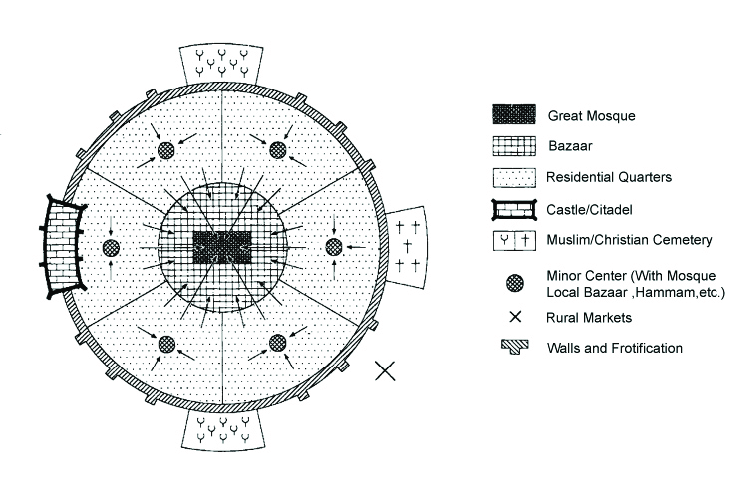unit 6 ap human
1/23
There's no tags or description
Looks like no tags are added yet.
Name | Mastery | Learn | Test | Matching | Spaced |
|---|
No study sessions yet.
24 Terms
urban area
defined as a city and its surrounding suburbs
metropolitan area
a city and the surrounding areas that are influenced economically and culturally by the city
urban sprawl
a process where urban areas expand in an unplanned and uncontrolled way, covering large expanses of land in housing, commercial development, and roads
edge city
a type of community located on the outskirts of a large city
boomburb
a suburb that has grown rapidly into a large and sprawling city with more than 100,000 residents
exurb
typically a fast-growing community outside or on the edge of a metropolitan area where the residents and community are closely connected to the central city and suburbs
infill
redevelopment that identifies and develops vacant parcels of land within previously built areas
rank-size rule
a geographic concept that explains how the population size of cities within a country may be distributed
primate city
a city that far exceeds, in population size and influence- indicates an unbalanced level of development in a country due to a disproportionate population
central place theory- Walter Christaller
explains the hierarchical patterns in the number, size, and location of cities and other settlement
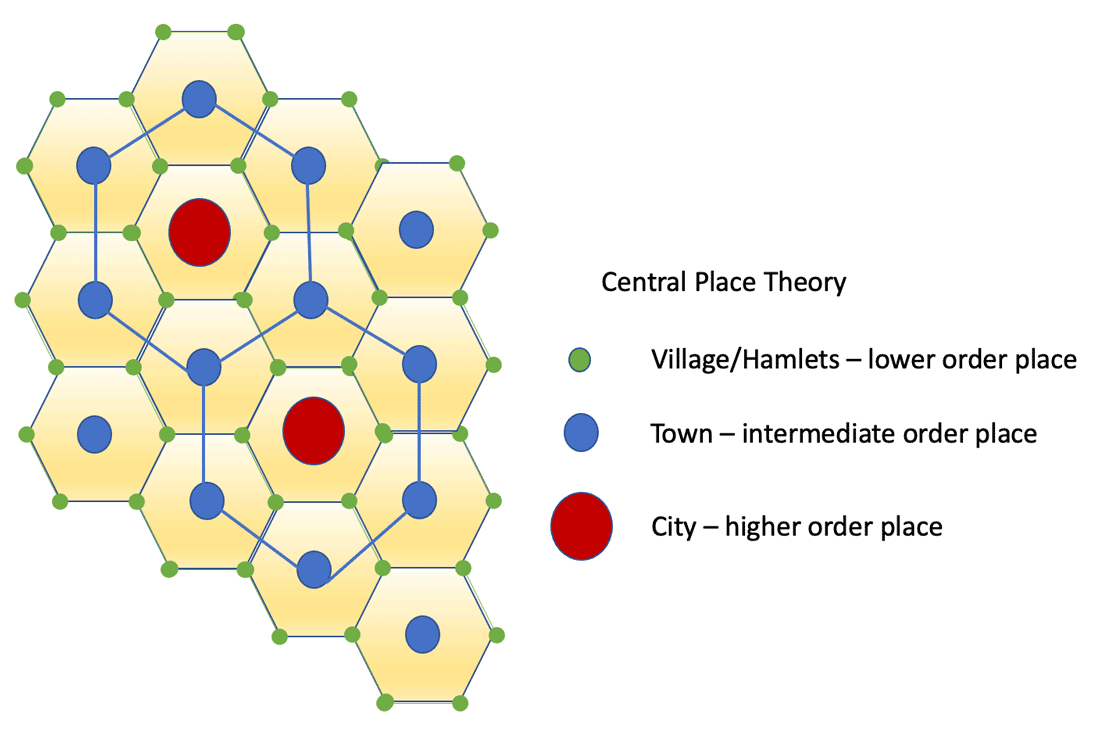
threshold
the number of people needed to support a certain good or service
range
the distance that someone is willing to travel for a good or service
Burgess’ concentric-zone model
The model observes that a city grows outward from its CBD in a series of concentric rings

Hoyt’s sector model
The model illustrates that as cities develop, wedge-shaped sectors and divisions stem from the CBD and emerge generally along transit routes.
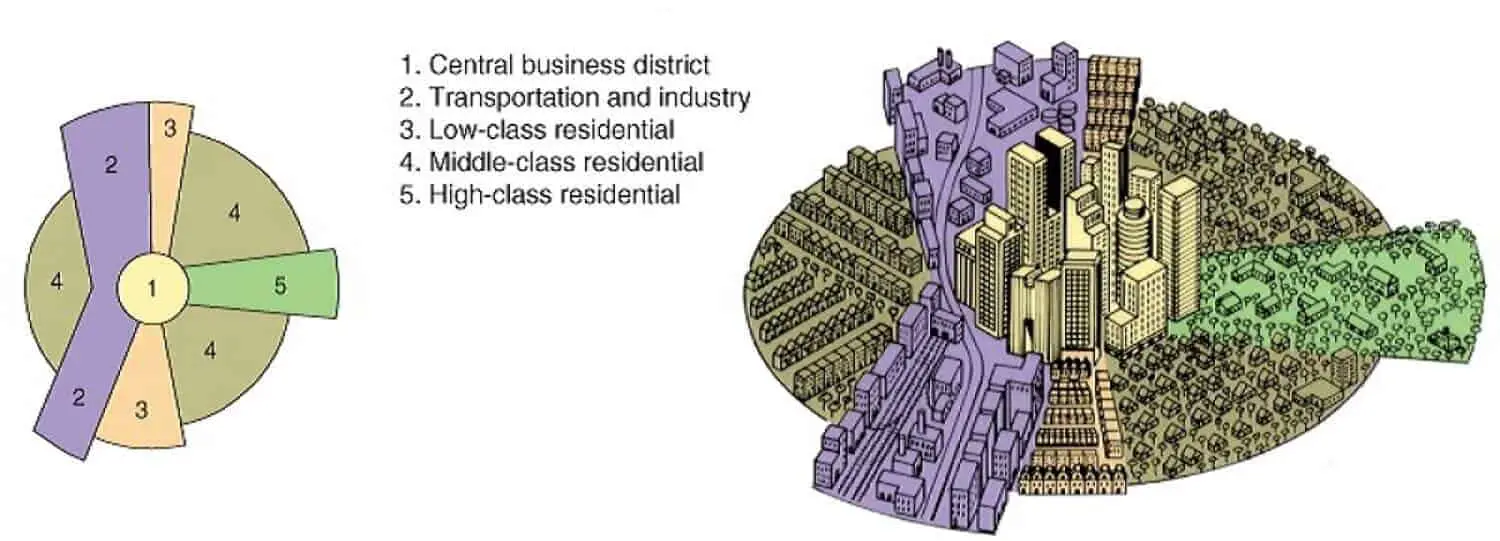
Harris and Ullman’s multiple-nuclei model
The model observes how most large U.S cities don't grow in rings or sectors but are formed by the progressive integration of multiple focal points of a functional regions or nodes
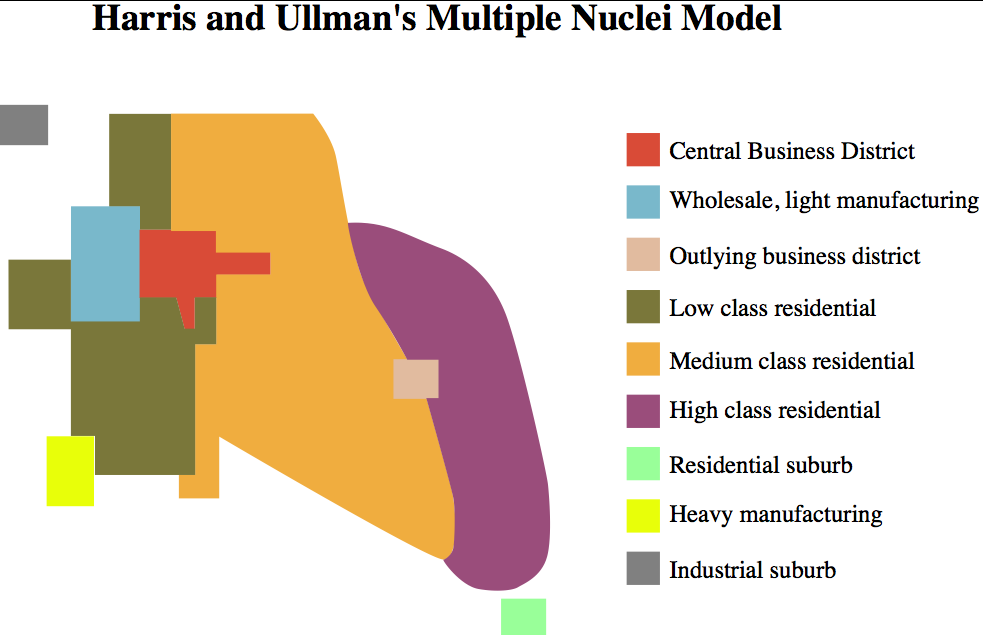
nodes
A functional region is also called a nodal region because it is defined by a social or economic function that occurs between a node or focal point and the surrounding areas
Harris’ galactic city model
(also called the peripheral model) describes a place where economic activity moves away from the CBD toward the urban fringe or surrounding subrubs
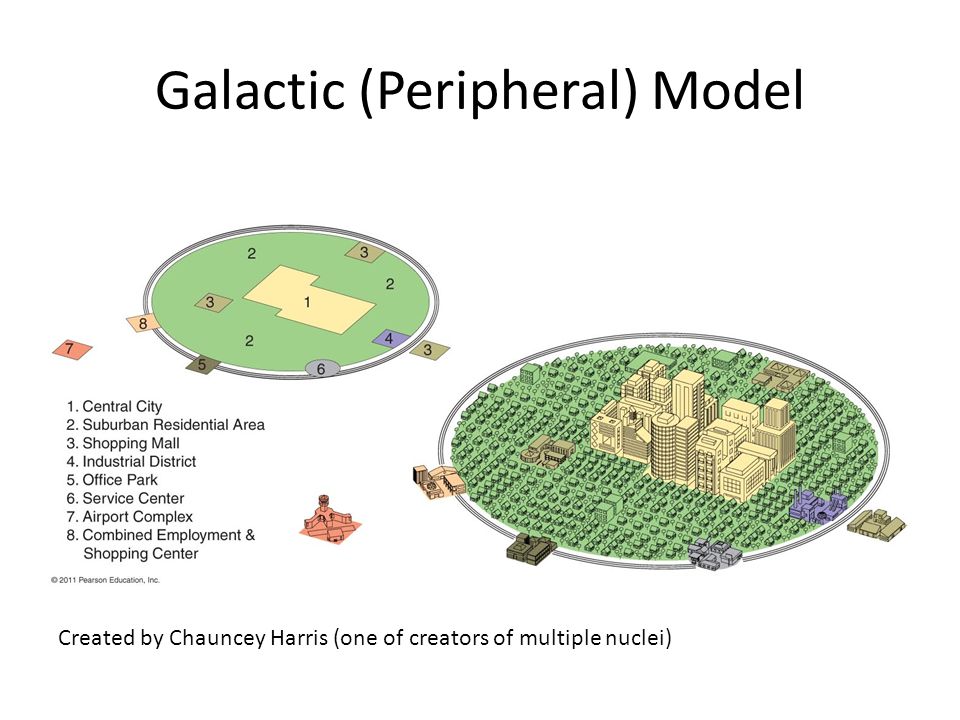
Griffin & Ford Latin American city model
model shows that most cities have a CBD, one dominant elite residential sector, and a commercial spine. These areas are then surrounded by a series of concentric zones that decrease in residential quality farther from the CBD
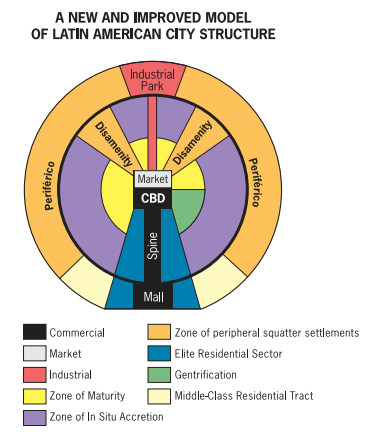
disamenity zones
high-poverty urban areas in disadvantaged locations containing steep slopes, flood-prone ground, rail lines, landfills, or industry
squatter settlements
informal housing areas often found in disamenity zones
De Blij Sub-Saharan Africa & South Asia model
The model has 3 CBD's: Colonial CBD, traditional CBD, and market zone. Wealth and services decrease in outer rings
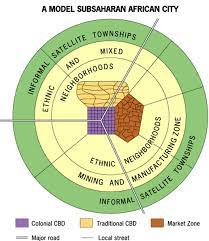
McGee Southeast Asian city model
The model represents Southeast Asian cities that grow around ports and that lack a clearly defined CBD. Only two formal zones that remain constant: the port zone and zone of intensive market gardening on periphery
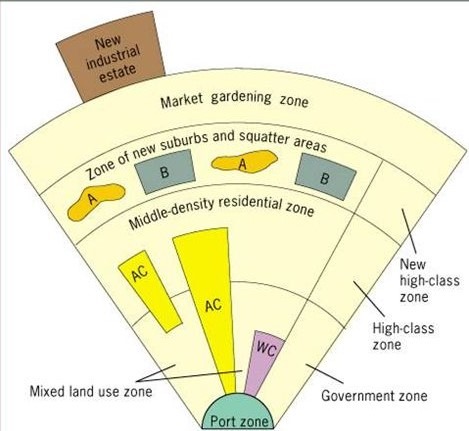
Vance Urban realms model
The model shows everyone living in suburbs, and resources are all in own area, fewer jobs in CBD; demise of city center
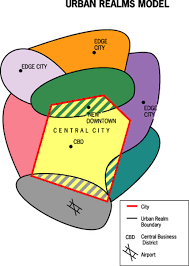
Dettman Middle Eastern Model
The model is centered around Souq or Mosque, has religious aspects. Modern buildings outside center e.g Istanbul & Cairo
